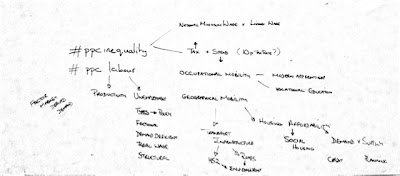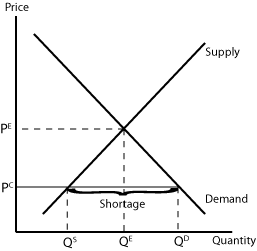Monopoly is when one firm controls a market, and is said to have price maker power. The market is said to be concentrated.
A working definition is any firm controlling more than 25% of its market in terms of sales revenue or turnover, thus Tesco could be said to be in a monopoly position in the supermarket industry with over 30%.
Monopoly is said to focus on profit maximisation and lowers output below and raises price above that which would be generated in a competitive market. It can extract high profits protected behind barriers to entry, obstacles which prevent new firms coming in to compete away high profits. These barrier tend to come in 3 forms (the 3 Ss):
- structural barriers: natural barriers arising from the distinct characteristics of the industry such as high capital set up costs (often combined with high sunk costs - investment which is non recoverable on exit)
- statutory barriers: legal barriers put in place by government such a licenses to operate in certain industries or Intellectual Property Rights (IPR) such a patent preventing other firms copying a process or innovation.
- strategic barriers: artificial barriers created through firm decision making such as strong branding and heavy advertising or pricing levels aimed a discouraging new competition.
Negatives of Monopoly:
- Welfare loss is generated through restricting output and raising price (allocative inefficiency)
- The profit maximising incentive may also move the firm away from short run productive efficiency
- productive inefficiencies may be exaggerated by x-inefficiency of organisational slack, where the company allows cost to creep up due to a lack of competitive pressure
- the lack of choice could be seen to be another negative aspect of monopoly
Positives of Monopoly
- Economies of Scale
- Dynamic Efficiency: High profits are used for research and development in products and processes which drive down costs and create new choices for society in the future
If the government decides the monopoly on balance is not in the public interest there are a range of policy options open to it:
Policy:
- Tax: Not a shift to the left of the supply curve because this is a tax on income (profit) for the business owners. A windfall tax has been used against the banking industry recently.
- Remove barriers to entry: easy when these are statutory barriers
- Privatise: creates incentive to be efficient, especially when combine with the removal of barriers to entry
- Nationalise: make profits for the government or lower prices towards welfare maximisation
- Regulate: prevent monopolies being created which are not in the consumer interest or monitor existing monopolies to make sure they are acting in the public interest
End Evaluation:
Capitalism has a natural tendency towards concentration. Global markets means it is large companies that have the resources to compete at this level. Anti-monopoly legislation perhaps also needs a global architecture. Low prices and choice is perhaps best generated through a competitive oligopoly where a small number of large firms dominate a particular market















